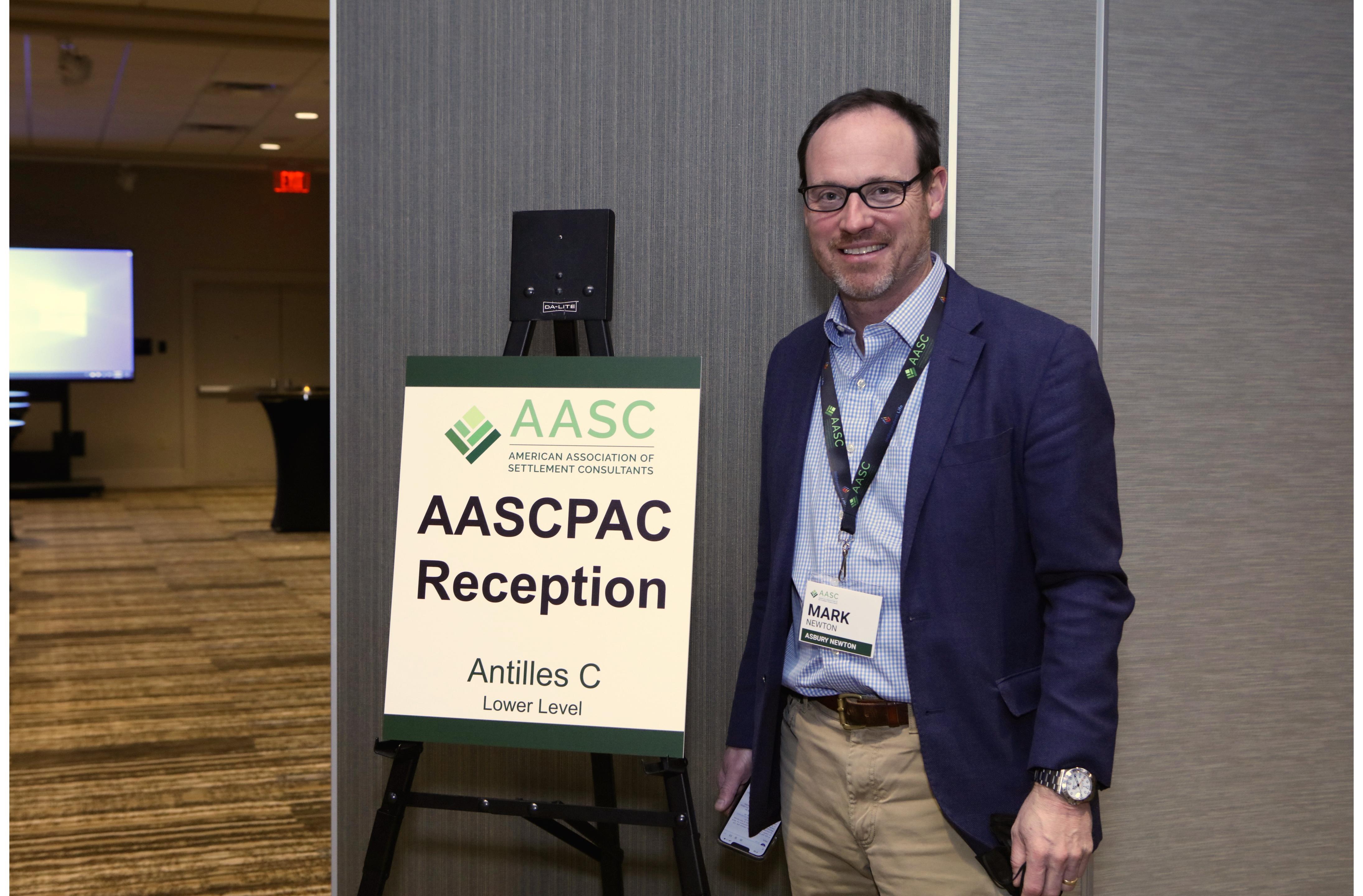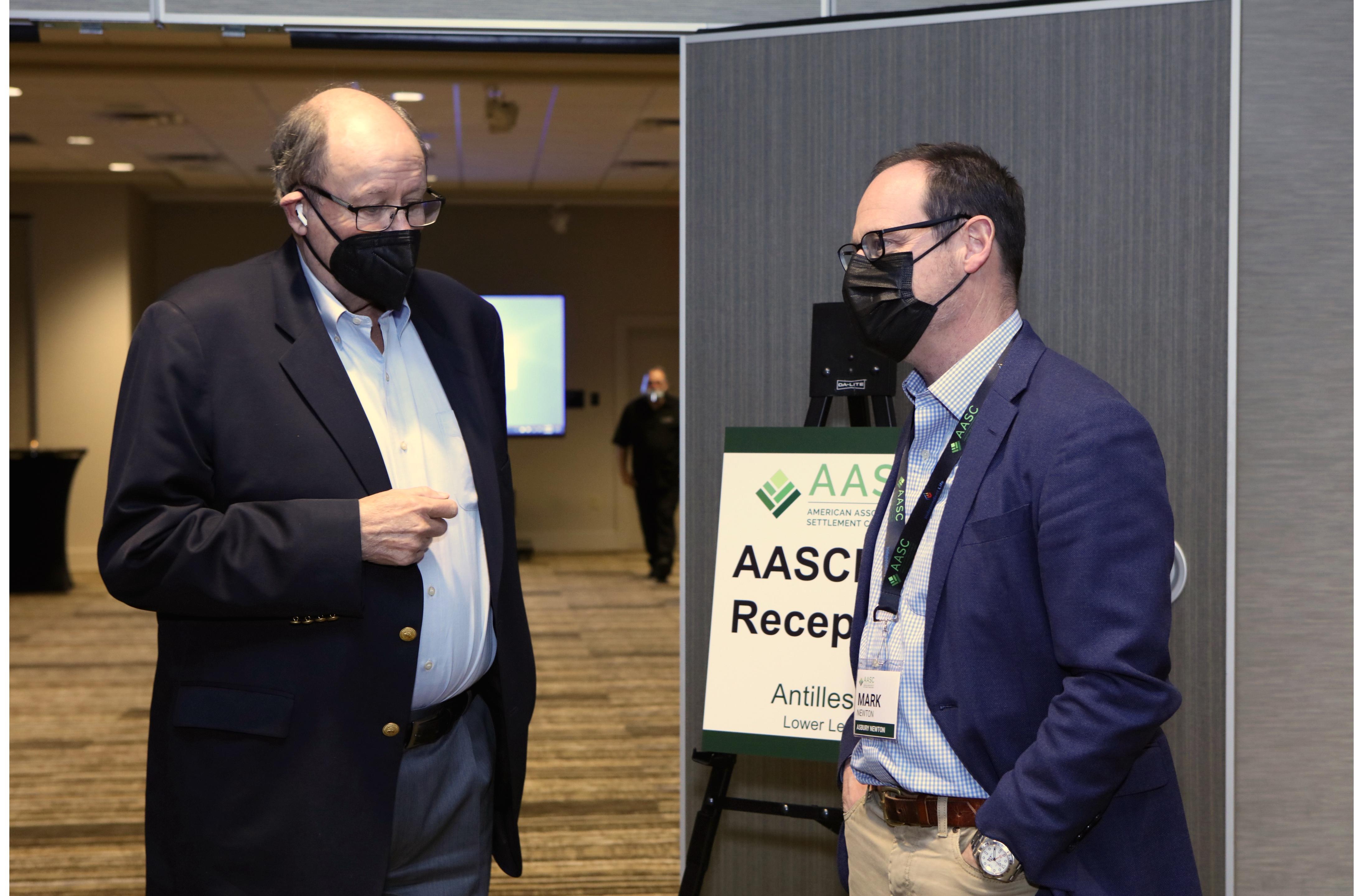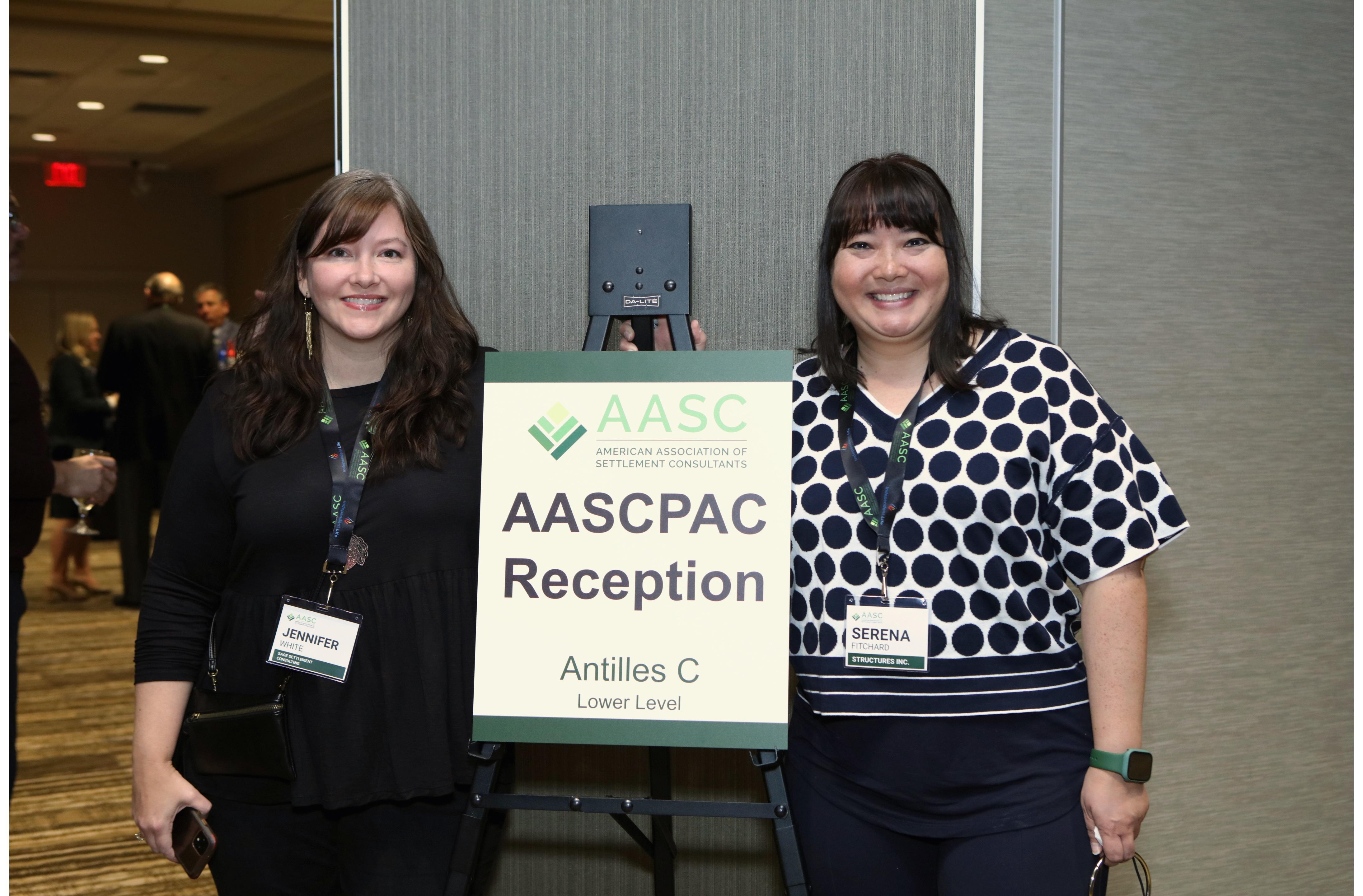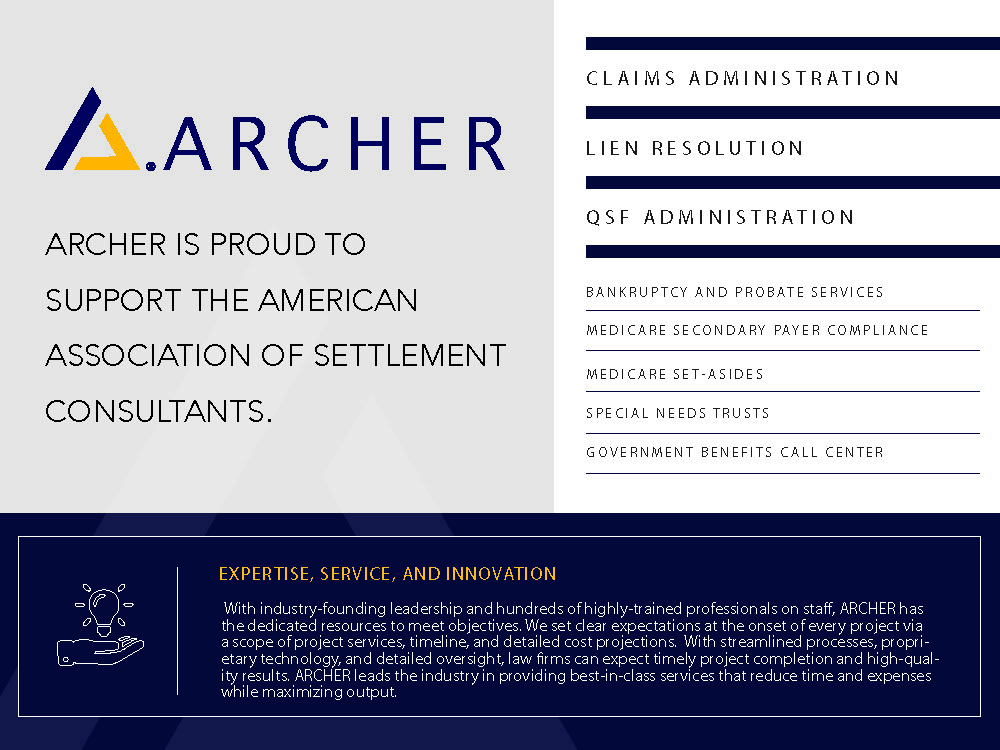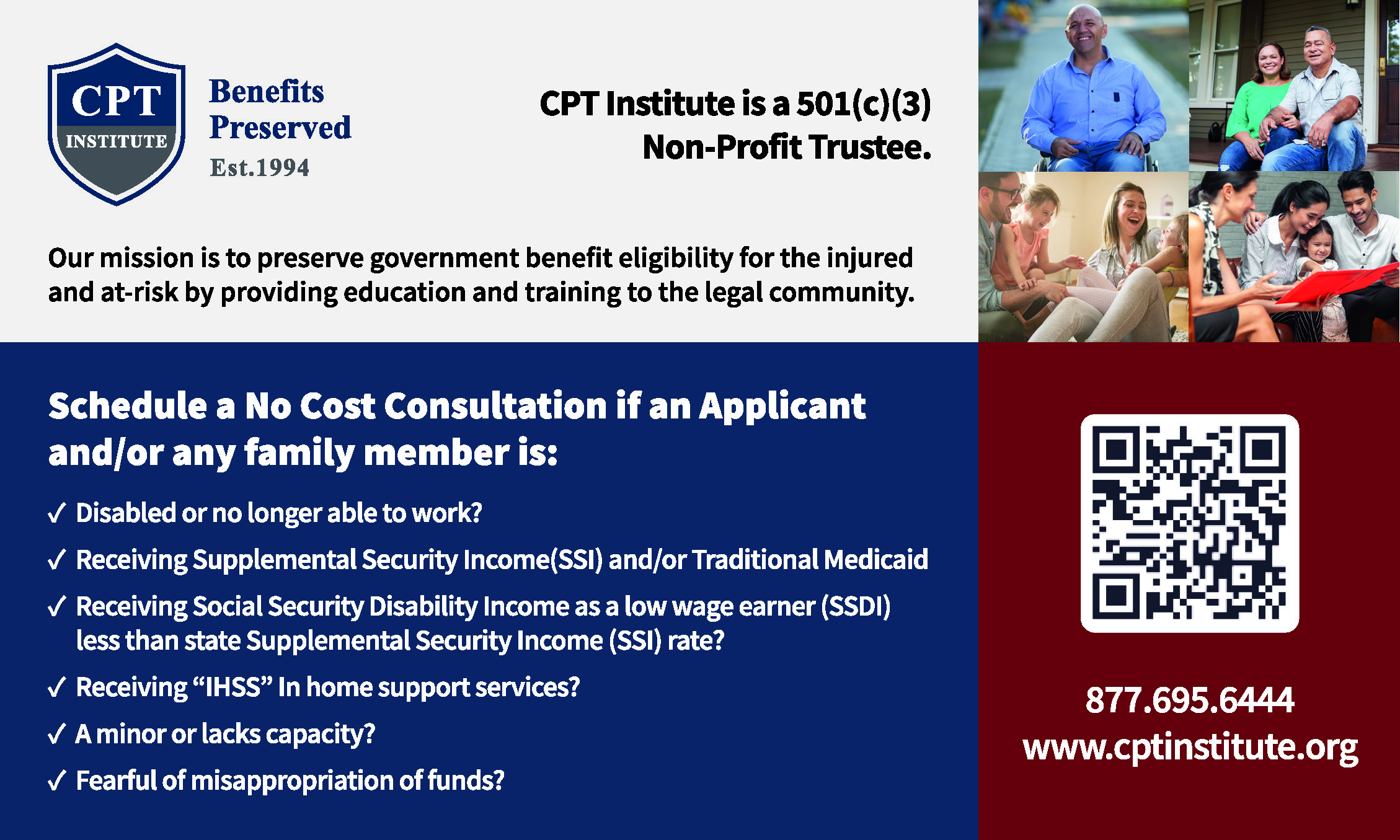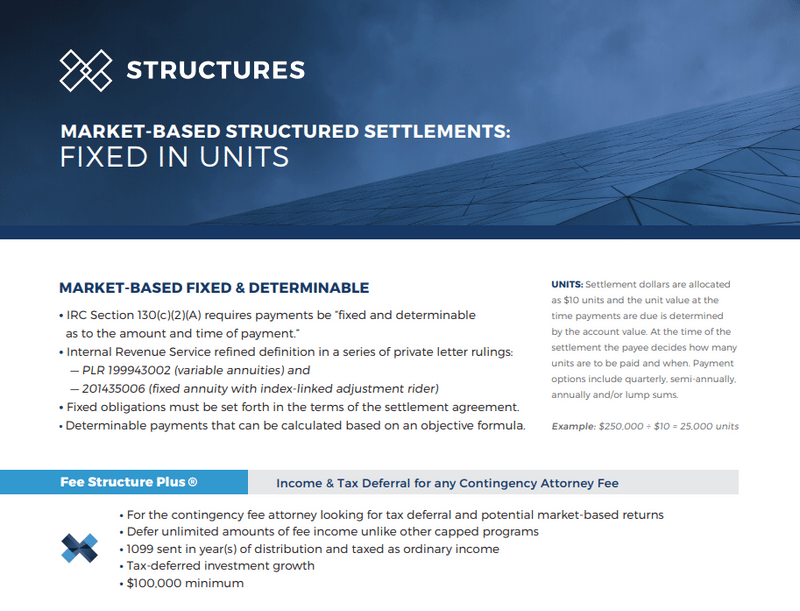The Industry Voice
THE INDUSTRY VOICE
Educate. Engage. Evolve.
A Publication of the American Association of Settlement Consultants
Thanks to all of our members for a great year!
Table of Contents
Liability Medicare Set-Aside Arrangements: Explainer and Regulatory Update
Member Spotlight: Q&A with Tory Owens
Unraveling Five of the Most Common Myths About MSAs
What is a Spend Down?
Owning a Home with a Special Needs Trust
The Perils & Pitfalls of Individual Security Selection
Inflation: The Medical Settlement's Silent Killer
Click the headline to skip ahead to the article.
Liability Medicare Set-Aside Arrangements: Explainer and Regulatory Update
By Patrick Hindert, J.D., Independent Life
Introduction and Background
Unlike Workers Compensation Medicare Set-Aside (WCMSA) Arrangements, which Independent Life has written about in two prior articles (Part 1) and (Part 2), almost no regulatory authority exists for Medicare set-aside arrangements (MSAs) in third party liability settlements. The Medicare Secondary Payer (MSP) Act, enacted in 1980, requires certain insurers, including liability, automobile, no-fault and workers compensation insurers, to make payment first for services to Medicare beneficiaries regarding claimed injuries covered under their policies, with Medicare responsible only as a secondary payer.
Until 2001, however, when CMS issued the first of several policy memorandums addressing WCMSAs (the Patel
The Reference Guide, which includes numerous references and rules for structured settlement annuities has been updated multiple times – most recently in WCMSA Reference Guide Version 3.8 published November 14, 2022 and available for download on the CMS website.
CMS defines a WCMSA on its website as a financial agreement that allocates a portion of a workers’ compensation settlement to pay for future medical services related to the workers’ compensation injury, illness, or disease. These funds must be depleted before Medicare will pay for treatment related to the workers’ compensation injury, illness, or disease.
The CMS website further states: [a]ll parties in a workers’ compensation case have significant responsibilities under the Medicare Secondary Payer (MSP) laws to protect Medicare’s interests when resolving cases that include future medical expenses. The recommended method to protect Medicare’s interests is a WCMSA.
To date, however, CMS has been unable or unwilling to provide similar regulatory guidance for liability MSAs having repeatedly proposed, then withdrawn, liability MSA rules beginning in 2012.
CMS Withdrawal of its Most Recent NPRM
Most recently, in 2018, a proposed CMS Notice of Proposed Rulemaking [NPRM] would have clarified existing Medicare Secondary Payer (MSP) obligations associated with future medical items related to liability insurance (including self-insurance), no fault insurance, and workers’ compensation settlements, judgments, awards, or other payments.
On October 13, 2022, however, CMS withdrew the 2018 NPRM without comment – an action that caught many MSP experts completely by surprise.
Consider that less than one month earlier, three CMS representatives (Jacqueline Cipa, CMS Deputy Director, Division of MSP Operations; Steve Forry, CMS Division Director for MSP Program Operations; and John Jenkins, MSHS, MSHA, CMS Health Insurance Specialist) had addressed the 2022 National MSP Network Annual Conference.
According to one MSP Network conference attendee, these CMS representatives discussed other active projects on the CMS agenda (e.g. new re-review options, advanced notifications on key changes, AI on ICDs, etc.) surrounding implementation and improvement of WCMSA processes. However, they said nothing to signal the forthcoming CMS decision to withdraw the liability MSA NPRM.
Questions for Structured Settlement and Settlement Planning Professionals
With CMS offering no explanation as to why it withdrew the NPRM or any updated CMS liability MSA guidance, what liability MSA questions, and what MSA questions more generally, should structured settlement and settlement planning professionals now be asking?
This article addresses two of the most immediate questions (why did CMS withdraw the NPRM; and how will this action impact liability cases going forward?) with relevant explanations and analysis from selected MSP experts.
A subsequent article, the final article in this four-part Independent Life MSA series, will address two structured settlement specific questions: how will the CMS NPRM withdrawal impact the structured settlement MSA market; and what lessons, if any, should the structured settlement industry learn as a result?
Why did CMS withdraw the NPRM?
Since CMS withdrew the NPRM, multiple MSP experts have offered their interpretations and advice. These MSP experts include: Natt Reifler, Esq., VP of MSP Compliance at Medivest; Rafael Gonzalez, Esq., an attorney with the law firm Cattie & Gonzalez; and Rasa Fumagalli, J.D., MSCC, CMSP-F, Director of MSP Compliance Services Synergy Settlement Services.
In an article titled Surprise Withdrawal of LMSA NPRM by CMS, Reifler suggests that political pressure from the MARC coalition urging CMS to not move forward with NPRM may have played a role.
Reifler and Gonzalez also question whether CMS has the authority under the MSP Act to issue regulations for liability MSAs.
Gonzalez, writing on LinkedIn notes: Word has it CMS has finally decided the MSP statute needs to be amended before going forward on code of federal regulations. So, be on the lookout for possible or potential legislation to be introduced during next Congress.
In her article titled Medicare withdraws proposed regulations for liability Medicare Set-Asides, AGAIN!!!, Fumagalli suggests a possible link between the CMS NPRM withdrawal and the dire financial straits of the Medicare Trust Fund.
As a consequence, she predicts: Medicare’s decision to withdraw the notice of proposed rule might mean that a greater focus will be placed on the Section 111 Total Payment Obligation to Claimant (TPOC) reporting resulting in increased denials of post-settlement injury-related claims.
How does the withdrawal of the NPRM impact liability cases going forward?
Regardless of the reason(s) CMS withdrew the NPRM – perhaps a combination of factors (political pressure, MSP Act restrictions, financial duress of the Medicare Trust Fund, as well as the comparative complexity of liability cases versus workers compensation cases) – parties settling liability cases must still comply with the requirements of the MSP Act when applicable.
42 C.F.R. 411.20 (a)(2) states that Medicare is prohibited from making payments for services to the extent that payment has been made or can reasonably be expected to be made under any of the following: (i) workers’ compensation; (ii) liability insurance; (iii) no-fault insurance.
In their linked articles, each of the three MSP experts also address the challenges for attorneys and other professionals advising clients in liability cases as a result of CMS withdrawing the NPRM.
Reifler offers the most comprehensive analysis and recommends [e]ach attorney should provide their clients with enough information to help them assess their risks and to determine if denial of injury-related future medicals or the potential for recovery of future conditional payments by Medicare is a risk they are willing to take.
Reifler also adds that products (such as allocation reports, compliance opinion letters and apportionment analyses – in conjunction with legal opinion letters) are available in the market for liability settlements to address MSP exposure and protect Medicare’s interests with varying client-specific risk tolerance levels.
Gonzalez recites a litany of ongoing MSA problems resulting from the NPRM withdrawal ( and worst of all, back to significant potential exposure for payers and beneficiaries alike), before proposing a legislative solution: Congress should amend the Social Security Act to clarify how litigants in all cases can make sure Medicare remains a secondary payer pre and post settlement.
Funagalli points out CMS has previously provided some insights into its liability MSA approach with two 2011 publications: 1) the CMS Region VI Stalcup Memorandum; and 2) the CMS Benson Memorandum. Without additional liability-specific CMS MSA guidance, structured settlement and settlement planning professionals might now want to review those CMS memos.
Summary of the Stalcup Memorandum
Written by Sally Stalcup, then CMS Region VI Coordinator, and published May 25, 2011, the untitled Stalcup Memo sets forth CMS liability MSA policy positions with important caveats. Described as a general summary not intended to take the place of either the law or regulations, the memo’s applicability is limited to states covered by CMS Region VI: Oklahoma, Texas, New Mexico, Louisiana and Arkansas.
Some of the issues addressed in the Stalcup Memo:
- CMS does not mandate a specific mechanism to protect those interests [a]nd the law does not require a ‘set-aside’ in any situation. Further, there is no distinction in the law between a Workers’ Compensation and a liability case.
- A set-aside is CMS’ preferred method of choice as it provides the best protection for Medicare and the Medicare beneficiary.
- Unlike Workers Compensation cases, there is no formal review process for liability cases. CMS review is decided on a case-by-case basis.
- The only situation where CMS will recognize allocations of liability payments to non-medical future losses is when payment is based upon an order of a court of competent jurisdiction following its review on the merits of the case.
- Each plaintiff attorney and defense attorney must decide, based on the facts of each case, whether there is funding for future medicals and, if yes, a need to protect Medicare.
- If yes: 1) plaintiff attorneys should make certain those funds are used to pay for otherwise Medicare covered services as provided in the settlement or judgment; 2) defense attorneys or insurers should document their notification of the plaintiff attorney and Medicare beneficiary that the settlement does fund future medicals that obligates them to protect Medicare.
- Although not inclusive, the Stalcup Memo also provides examples to help attorneys determine whether liability settlement funds must be used to protect Medicare’s interests on any Medicare covered otherwise reimbursable, case related, future medical services. The memo further clarifies the terms otherwise reimbursable and case related.
Summary of the Benson Memorandum
To this writer’s knowledge, a memorandum issued on September 30, 2011 by Charlotte Benson, then Acting Director of CMS Financial Service Group, Office of Financial Management, (the Benson Memorandum) has been the only memorandum addressing liability MSAs published by CMS National Headquarters. In summary, the memo states a Medicare beneficiary does not need to submit a liability MSA amount for review, and Medicare considers its interest satisfied, where the beneficiary’s treating physician certifies in writing that treatment for the alleged injury related to the liability insurance (including self-insurance) settlement has been completed as of the date of the settlement, and that future medical items and/or services for that injury will not be required.
For more detailed insights concerning these two CMS liability MSA related publications, Jason Lazarus, President and Chief Executive Officer of Synergy Settlement Services, has previously published online analyses of both the Stalcup and Benson Memos.
Conclusion
Medicare Secondary Payer (MSP) professional practice, including but not limited to Medicare Set-Asides (MSAs), has become an important and complex specialty that increasingly overlaps with and impacts structured settlements and personal injury settlement planning. This article summarizes general analysis and recommendations by MSP experts following CMS’s recent withdrawal of the liability MSA NPRM. The concluding article of Independent Life’s MSA series will consider more specifically the impact of CMS’ action on the structured settlement MSA market.
Member Spotlight: Q&A with Tory Owens
In each edition of The Industry Voice, we are going to take the opportunity to talk with a member to learn more about their journey in settlement consulting, get their insight into the most pressing industry issues and get their advice on how to be successful as a consultant. In this edition, we interview Tory Owens, AASC's President-Elect and a settlement consultant with JCR Settlements. Tory will take the helm of AASC in February.
Let’s start off by you telling us a little about yourself.
I am Tory Owens and I have been in Structured Settlements for a little less than 8 years. I am based in Los Angeles, CA where I live with my wife and 3 kids.
What advice do you have for individuals who are just starting their career in settlement planning?
I would advise anyone who is just starting off their career in settlement planning to invest in their marketing and networking so that they can cultivate relationships with attorneys that can possibly send them business. I would also advise them to try to be knowledgeable on many aspects of settlement planning, the different products that can be offered to people as well as being able to personally quote their own cases and prepare all of their own documents.
How have you grown your business over the years?
I have grown my business over the years by cultivating real relationships in the industry without expecting anything in return. In addition, I go above and beyond in the service I provide to my clients. Our industry is competitive. We all have access to the same rates and most of us to the same products, so to set myself apart I make sure to give my clients a first-class customer service experience.
What advice do you have for consultants on how to resolve disputes and build connections with consultants on the other side of the settlement table?
I advise consultants to be fair. I also advise consultants to build relationships with defense/plaintiff brokers so that when a dispute arises it can more easily be resolved. It is easier to resolve a dispute when the person you are disputing with is someone you like or someone you consider a friend.
How has the industry changed since you started working in settlement planning?
The industry has changed because it is becoming more plaintiff-oriented. When I first started most of the business came from the defense side and the insurance carriers. However, over the years I feel like it has shifted and now the plaintiff side of settlement planning is starting to have more control.
What do you view as the most critical issues in the industry right now?
Cooperation, approved lists, and funding vehicles.
Remote work is now a way of life for many in the workforce, do you have any advice on maintaining work-life balance in this new way of working?
I personally have been working from home the majority of the time and the advice I have is to take advantage of it. At times, working from home has allowed me to be more productive and/or to complete a full work day in a lesser amount of time. When I work from home I save 1.5 hours roundtrip in commute to the office which allows me to start and end my work day sooner. It gives me more balance and time to spend with my family or personal time to myself. You save on gas, time getting dressed to go to the office etc.. so my advice would be to take advantage of it and create a work schedule that fits your lifestyle.
If you had a magic wand, what is one thing you would chan
Expansion of qualifying cases under I.R.C. 104(a)2 and the industry as a whole. AASC is working on Capitol Hill to expand 104(a)2 to include sexual abuse cases, but changes to the tax code take time and it would be great to have a magic wand in this case.
What are you most excited about in the next year?
The growth of the structured settlement industry fueled by rising interest rates.
Unraveling Five of the Most Common Myths About MSAs By Andrea Mills and Carla Roberts, Ametros
By Andrea Mills and Carla Roberts, Ametros
An MSA is an account used to pay for injury-related, Medicare-covered medical services and prescription expenses. It seems simple enough, but a couple of caveats serve to complicate the idea of MSAs.
First is the term, ‘injury-related.’ The MSA can only be used for medical treatment and prescriptions related to the incident (typically work-related), not all medical conditions the injured individual has. Secondly, only ‘Medicare-covered’ services may be funded through the MSA. For example, many intermittent home health care expenses can be covered by Medicare, however, daily home health care services such as a personal care for daily living activities would not be covered. Home health care expenses that are occasional and for intermittent use such as intermittent skilled nursing care, and physical or occupational therapy in the home would be covered by Medicare. To determine if there would be Medicare coverage for certain home health care expenses, it’s important to understand the type of care and the duration for those needs.

Failing to comply with the rules and regulations of The Centers for Medicare & Medicaid Services (CMS) guidelines for MSAs can land an injured individual in a heap of trouble, jeopardizing Medicare benefits. If you misuse your Medicare Set Aside, Medicare can say ‘we’re not going to treat you until you make up this money that you’ve misspent, Correia added. If we don’t keep our members compliant when they do get to Medicare, Medicare will not pay for any injury-related services if that MSA was not used properly.
Managing MSAs is no easy task. That’s why the Centers for Medicare and Medicaid Services (CMS) has ‘highly recommended’ that injured workers use professional administrators to assist with their MSAs after they’ve settled their claims. Here are some of the most common myths and realities about MSAs:
1) Medicare covers everything
There are a variety of medical treatments and modalities that Medicare does not cover, and it’s often complicated for people to understand what they can and cannot get coverage for with their settlement funds.
Some inaccurately believe, for example, that everything that the insurance carrier previously paid for can be funded through the MSA, which is not the case. That can be extremely frustrating when people learn some of the treatment they were receiving pre-settlement is suddenly not covered.
The injured individual may need to find alternatives and ensure treatments are covered. An experienced professional administrator can be invaluable by offering discount networks for non-MSA services and medications, thereby limiting out-of-pocket expenses.
2) MSAs cover the same items universally
Each injured individual who settles their claim has unique needs; no two MSA allocations are the same. The MSA outlines the specific injury(ies) covered, treatments, prescriptions, etc. and includes the associated funding amounts.
One of the misconceptions is that if MSA funds are unspent for a time period, the funds can be used on unrelated items, which is incorrect. Unspent MSA money cannot be used for recreational spending money, for example, buying a new car or paying down debts, and must still be used for ‘injury-related’ and ‘Medicare-covered services’ purposes.
MSAs are often funded via an annuity where there is a set annual amount to fund the injury-related treatment. This fact alludes many injured individuals and others alike. Some believe that an unused portion of the annual MSA amount can be spent on something other than Medicare-covered services for the specific injury.
3) Next year’s MSA funds can be used if this year’s allocation is depleted
Temporary MSA fund depletion can be complicated for injured individuals to understand. They may wonder why they can’t tap into additional funds to pay for treatment in a given year when they have exhausted allotted funds for the year. Support from a professional administer can be helpful during the process to ensure that the correct documentation is sent to Medicare, which demonstrates the settlement funds were exhausted correctly, as is required by CMS. Additionally, it should also be noted that when Medicare pays, the injured individual is responsible for 20-percent copays. Contrary to what some believe, the MSA does not pay these copays.
A lot of times the member was told that they won’t [have to pay] out of pocket ever again, and they’re like, ‘why am I paying for this? It should come out of my account?’ said Ana Parks, Assistant Manager for Member Care for Ametros. Medicare doesn’t cover copays. So being compliant, we wouldn’t be able to cover those anyway. An injured individual who opts to self-administer their own money would still not be able to use MSA funds for copays.
We get hired to keep the account compliant, said Robin Kavanaugh, Assistant Manager, Voice of Customer. If [the injured individual] self-administers and was spending it on things that are not compliant, they would be at risk. Ensuring the right treatment is paid for with the right funds – whether MSA or non-MSA, is vital to the process so Medicare can become the primary payer when and if funds are exhausted.
4) Non-Medicare beneficiaries can ignore the rules
The injured individual who settles their claim and is not on Medicare at the time often thinks, ‘Medicare has nothing to do with my settlement funds,' or ‘I don’t need to worry about Medicare’s interests,' 'I’m not on Medicare right now,’ or, ‘I can just use my spouse’s insurance,' At some point, most will be Medicare beneficiaries. If MSA money has not been used for treating the specific injury, Medicare may not pay until it can be shown, through attestation, that money has been depleted appropriately. Otherwise, Medicare can demand that the person refund that money, possibly with penalties.
5) My medical treatment needs are unlikely to change
Medical treatment needs do change over time. Physicians may add new medications and/or change the dosages. Or a surgery may be needed to treat the work-related injury. Treatment plans can and do change – often. One thought is that the person can pay out-of-pocket for unexpected, additional treatments. That could become extremely expensive, especially since the prices paid post-settlement of the claim may be much higher than what the insurance company paid.
Leveraging discount providers and pharmacies offered by reputable professional administrators can be key to unexpected changes in treatment regimens by helping to extend and protect the injured individual’s MSA funds. Finding the right pharmacy and manufacturer, for example, can save substantial amounts of money on prescriptions. We do know that treatment changes over time. Sometimes we’ll see that they might have just one medication listed on their account, where later the doctor may prescribe other medications, Parks said. As long as it’s related to the injury and Medicare-covered, we will continue to pay for the services that they have.
Conclusion
One of the most important decisions in settling a claim with future medical is determining how the MSA will be administered—whether an individual will choose to administer their own funds or have professionals manage them. With the complexities of MSAs, it’s common for individuals to become overwhelmed by the responsibility of having an MSA or misunderstand how it needs to be managed according to Medicare’s guidelines. This is particularly true if self-administration is their chosen path after settlement.
If an individual opts to manage their own funds, it’s critical they understand how to properly administer them, without the support of their case manager, adjuster, and attorney. This is where professional administration is a helpful tool. As the main resource and support for an individual’s medical care after settlement, the administrator ensures common mistakes made with medical settlement funds caused by preliminary misconceptions are completely avoided. Navigating the world of MSAs is challenging, except for the few experts who specialize in them. Professional administrators are a crucial component to preserving, appropriately expending the MSA account, and providing ongoing support for the injured individual after settlement.
What is a Spend Down?
By Cameron Lindahl, Secured Futures

Can you ever have too much money? While most of us would excitingly say of course not! Recipients of Supplemental Security Income (SSI) or Medicaid could risk losing their eligibility if they have too much cash, or too many assets, which put them over the income and asset limits for eligibility. This is when a Pooled Special Needs Trust comes in, and in some cases a Spend Down.
A Spend Down is a spending plan designed to ensure any assets over the established eligibility limits are spent in the same calendar month it is received. This spending plan is ideal when a person is receiving means-tested benefits which they can comfortably spend in one calendar month on themselves– no gifting or paying back is allowed.
While a Pooled Special Needs Trust is a great way for children and adults with disabilities to receive an inheritance or settlement and maintain their needs-based government benefit eligibility, there are some situations when a Pooled Special Needs Trust doesn’t make sense and in these cases, we recommend a spend down to satisfy immediate needs while keeping eligibility intact.
What can a Spend Down Pay for?
- Paying off debts
- Purchasing a primary residence or vehicle
- Rent or utilities within the calendar month
- Purchasing furniture or appliances
- Prepaid burial arrangements
- Legal fees
- Educational expenses
- Medical expenses and equipment not covered by Medicaid
- Entertainment, recreation, or vacation expenses
- Personal products
This list is intended to give you a general idea of commonly allowed purchases but is not all-inclusive.
Money is spent, now what?
Government Agencies generally require notification of the funds received along with documentation of all expenses paid to avoid eligibility violations. This notice may include receipts, settlement or inheritance information, and bank statements. If you have additional questions or need assistance, we encourage you to contact your local Social Security and Medicaid office for details or consult a Special Needs Attorney.
Next Steps: How to send a Spend Down Notice: A 3-Step Guide
Resources
- Utilizing the Spend Down Option to Maintain SSI and/or Medicaid Eligibility: Utilizing the Spend Down Option to Maintain SSI and/or Medicaid Eligibility (specialneedsalliance.org)
- SI 01150.007 Transfer of Resources by Spend-Down: SSA – POMS: SI 01150.007 – Transfer of Resources by Spend-Down – 02/24/2012
- SPOTLIGHT ON RESOURCES — 2021 Edition: SSI Spotlight on Resources (ssa.gov)
- SI 01110.210 Excluded Resources: SSA – POMS: SI 01110.210 – Excluded Resources – 12/15/2008
- SI 01150.121 Exceptions — Transfers to a Trust: SSA – POMS: SI 01150.121 – Exceptions — Transfers to a Trust – 07/12/2010
- SI 01150.125 Exceptions — Transfers for Purposes Other Than to Obtain SSI: SSA – POMS: SI 01150.125 – Exceptions – Transfers for Purposes Other Than to Obtain SSI – 12/24/2013
- SI 01150.001 What is a Resource Transfer: SSA – POMS: SI 01150.001 – What is a Resource Transfer – 07/15/2016
DISCLAIMER: The information provided by Secured Alliance is for informational purposes only and is intended to be used as a non-legal guide before consultation with an attorney familiar with your specific legal situation. Secured Alliance is not engaged in the practice of law or rendering legal advice or counsel. No such legal advice or counseling is either expressly or impliedly intended. This form is not a substitute for the advice or counsel of an attorney. If you require legal advice, you should seek the services of an attorney.
To contact the author: Cameron Lindahl, CLindahl@securedalliance.org
Owning a Home with a Special Needs Trust
By Amy Tripp, Special Needs Alliance
To say that adequate housing options for persons with disabilities is a challenge is an understatement. As a result, in the process of future planning, housing is almost always one of the most important topics. Some people with disabilities would like to continue living in the family home, with appropriate supports, after Mom and Dad are gone, and parents often agree that would best serve their son or daughter’s interest. Other parents anticipate leaving funds that would allow their son or daughter to own appropriate alternate housing. In both cases, it must be determined if it makes sense for the house to be owned by a special needs trust (SNT) that is likely at the center of their plan. And as noted below, individuals and families must also weigh the benefits of home ownership versus renting to determine the best fit.
The short answer is that, in many cases, is does make sense for an SNT to own a home, but there are numerous considerations and caveats that come into play. This is an overview of the rules and issues that can arise when an SNT owns a home.
It is important first to identify what type of trust would own the home. We should distinguish between first party and third party trusts. A first party SNT is funded with the individual beneficiary’s assets and, after the death of the beneficiary, requires reimbursement to the state for Medicaid services. A third party SNT, which is funded with someone else’s assets, such as an inheritance from a parent or proceeds from a life insurance policy, is more flexible and does not require reimbursement to the state.
Options for Titling Homes
A threshold consideration in deciding whether a residence is better owned by an SNT or the individual is whether that person has legal capacity to hold title on their own and what decision-making supports the person might need. Minors simply cannot hold title and would require a guardian (in some states, a conservator) be appointed. Many adults may also need support to manage home ownership. If an adult is under guardianship or conservatorship, the guardian or conservator would likely have legal authority to manage the property. Many other adults with I/DD would benefit from using decision-making supporters to help them meet the obligations of home ownership.
For an adult with I/DD, home ownership can be empowering, as it is for all of us. The responsibilities of home ownership, as well as the status of a property owner, can have very positive impact. Families should take care to ensure that appropriate decision-making supports are in place.
If direct ownership isn’t practical, leaving a family home to a third party SNT, or buying one with trust assets, protects the property from creditors and leaves financial and maintenance issues in the hands of a trustee.
While a residence purchased by a first party SNT gains these advantages during the beneficiary’s lifetime, the home is subject to recovery by the state upon the beneficiary’s death to the extent of the costs paid by Medicaid.
Finally, it is important to look at who else might be living in the home. If the home is owned outright by a first party SNT, there may be complications if other family members also reside there. Distributions from first party SNTs are supposed to be for the sole benefit of the beneficiary, and this may be interpreted differently by various Social Security offices. Depending on the level of caregiving performed by family members, they may be required to pay rent in order to avoid affecting the beneficiary’s eligibility for government benefits. There may even be issues regarding what maintenance the trust should pay for.
Some trustees, seeking to avoid a first party trust payback, arrange for the SNT to purchase a life estate interest in the family residence. By paying a portion of the home’s value, the beneficiary has a right to live there, rent free, as long as he or she lives. In some states, however, this won’t avoid the Medicaid lien, and other family members residing in the home still may need to pay rent to avoid conflict with the sole benefit rule.
Running the Numbers
Of course, as attractive as the idea is, whether it is practical to plan to provide a house to an adult son or daughter with disabilities after you’re gone comes down to dollars.
Any time the purchase or transfer of ownership of a residence is begin considered, it is critical to prepare a detailed budget which takes into consideration things such as the cost of modifications needed for accessibility, long-term maintenance, utilities, taxes, insurance, and general upkeep. A common planning mistake is for people to create SNTs which purchase homes, only to have the housing costs consume such a large part of the available resources that other important purposes of the SNT are compromised, leading to deterioration of the property and forcing sale at a discounted price.
On occasion the solution may be as simple as finding a roommate. The trend today is for families to consolidate resources and purchase housing that provides for more than one adult. While there are some great examples of these types of arrangements, there are also many situations in which such plans simply don’t work. And many trustees are unwilling to deal with their complexity.
Beyond the numbers, persons with disabilities and their families should consider other pros and cons to homeownership, including whether the person may in the future want to live in a different neighborhood or area, the suitability of the home for future family configurations and the potential for aging in place.
Effect on Benefits
The ownership of property and the payment of housing expenses can impact the government benefits the individual may be receiving, including Supplemental Security Income (SSI) and Medicaid.
Notably, for persons who receive SSI, mortgage payments, property taxes, utilities and other housing costs paid on their behalf by an SNT are considered in-kind support and maintenance (ISM) and will reduce SSI. Good planning can often reduce the impact of these rules, but not always.
Likewise, depending on how a home is titled, the purchase or sale of a home can trigger interruptions or reductions in benefits in the months in which these events occur. While the home is an exempt asset for SSI and Medicaid benefits, the sale of the home in the future, if titled to the individual, will result in converting an exempt asset into countable resources. If the home is titled to the SNT, then the sale of the home would have no impact on eligibility.
Medicaid liens and other estate recovery claims are potential pitfalls when persons receiving benefits own their own homes, or have homes held in some SNTs. When a first party SNT owns the home, extra attention needs to be provided if other family members are living in the home and providing support to the beneficiary. When the beneficiary dies, Medicaid is reimbursed from the remaining assets in the first party SNT. If the Medicaid lien exceeds the balance of the assets in the first party SNT and the house is owned by the SNT, then the house may be lost. This can be a great hardship for some families who provide support and services to the beneficiary.
Conclusion
Housing is always a challenge in future planning for persons with disabilities. Arranging for a stable living environment is a high priority, but the considerations are many and complex, and families and their counselors are becoming increasingly creative as they struggle with the housing shortage. Whether an SNT can or should own a house involves a number of considerations, and families should seek advice from a qualified attorney to ensure that their objectives are met.
Amy Tripp is a member of the Special Needs Alliance, a national nonprofit dedicated to assisting individuals with disabilities, their families and the professionals who serve them. SNA is partnering with The Arc to provide educational resources, build public awareness and advocate for policies on behalf of people with intellectual/developmental disabilities and their families.
Reprinted with permission of the Special Needs Alliance – www.specialneedsalliance.org.
The Perils and Pitfalls of Individual Security Selection
By Marjorie Smith, CFP ®, Pacific Wealth Management, Sage Settlement Consulting
The allure of stock selection or stock picking attracts many investors. Picking stocks can be wildly lucrative, as Warren Buffett has demonstrated or as anyone who invested in Apple or Costco during those companies’ infancies knows. On an emotional level, it gratifies and thrills to invest directly in a company and to see it thrive. It makes us feel smart to identify a winner, and we enjoy participating directly in a company’s success.
While there is no universally right way to invest, investors should know that individual stock carries more risk than relying instead on asset class allocation. Asset class allocation means investing across different classes of securities, rather than focusing on specific securities within the asset classes. It means allocating a percentage of assets respectively to equities, bonds, cash, and sometimes commodities. Because thoughtful asset class allocation spreads risk through diversification, the odds of long-term success increase when contrasted with the person who invests solely in individual securities.
Stock picking is challenging for many reasons. First, it takes time and focus to monitor the individual securities. No company or industry does well all the time and it is difficult for even expert investors to anticipate and act on challenges to an individual company’s financial well-being. Betting that a struggling company will recover can work out, but sometimes it does not. Even when a company is destined to succeed, many investors do not have the discipline to hold a stock that has declined in value. They make devastating emotional decisions and sell at the worst time. Other individual investors simply do not have the aptitude for successfully navigating the volatility of security selection. Even seasoned investment professionals who have access to a wealth of data and resources generally advise against stock picking as a sustainable long-term investment strategy.
While stock picking can seem glamorous and potentially high-yielding, we at Pacific Wealth Management do not recommend it for our clients’ long-term financial security. It is simply too difficult and too luck-dependent for most people to maximize returns via individual security selection. Instead, we recommend a well-constructed, balanced portfolio that reflects an investor’s own risk tolerance and investment time horizon. Such diversification will smooth out volatility over time, maximizing the chances for greater performance than one would experience by day trading or riding individually selected securities to the finish line.
To contact the author: Marjorie Smith, margie@sagesettlements.com
Inflation: The Medical Settlement's Silent Killer
by Aaron Winnell
Economic inflation is a major topic of discussion these days. Just about everything, from gas to food, carries a higher price tag than it did a year ago. Some say this is a temporary side effect of economic recovery. Others argue that much of this may be here to stay. Regardless, most are mindful of the impact inflation is having on the average American’s buying power.
No one should be surprised to hear that the cost of medical care has an inflationary rate as well. Well before the present economic factors and policy decisions precipitated general inflation, medical costs have increased year over year by a rate that outstrips the general economic rate of inflation. According to the U.S. Bureau of Labor Statistics, medical care costs have increased 100.86% since 2000. That’s a doubling of medical costs in two decades! Bottom line: medical care will be more expensive in the future.
This brings us to a serious problem most medical settlements face. Often, the final portion of the settlement award designated for medical care is determined by looking at present day costs and the life expectancy of the beneficiary. Basically, it’s an annual expense multiplied by years of expected need. This, for instance, is generally how Medicare set-aside allocations are calculated, but the calculation is frequently applied to the entire medical portion of the settlement. Rarely is the inflationary rate of those medical costs considered.
This is why I’m calling inflation the medical settlement’s silent killer. In the year or two following settlement, it may seem like the funding is adequate. But as time marches on, each dollar reserved for medical expenses buys a little less care, fewer drugs, and fewer supplies. Soon, a beneficiary must find other money, cheaper alternatives, or simply treat less frequently. Factor in that many settlements aren’t funded at full value and that the beneficiary is buying services in an insurance-driven ecosystem as a cash payer, and you quickly see the long-term problem.
Factoring inflation into the settlement would be one way to mitigate much of the problem. But, if we’re going to be realistic, we must acknowledge that there are many factors that create a significant headwind to the more money solution. There are also other considerations: What rates are reasonable? How does the beneficiary avoid being gouged? What about coordinating with another policy that may be able to pay instead? Then there’s the need to keep settlement funds intended to consider Medicare’s interest separate and properly accounted for to protect the beneficiary’s Medicare benefit. If healthcare cost inflation is a silent killer, these other considerations are death by a thousand cuts.
Anyone who’s lived by a budget understands that when more money is not an option, keeping spending under control is essential to not running out at the end of the month. One must stretch their settlement proceeds if they are going to last, or at least last longer. This is where a professional administrator can make all the difference. Professional administrators are typically thought of as the go-to option for making sure a Medicare set-aside (MSA) arrangement is used properly. As a matter of fact, CMS highly recommends professional administration of MSAs (MSA Reference Guide v3.6, 17.1). The professional administrator uses the MSA according to CMS’ expectations and meets the beneficiary’s obligation to attest annually to the MSA’s proper use, thereby protecting the beneficiary’s Medicare benefit (as CMS can suspend benefits if it determines that improper use of the MSA represents a burden shift to Medicare). The professional administrator can also stretch MSA dollars to help them last.
So, we know that professional administrators are a great option for handling the compliance obligations placed on MSA money. But what about the silent killer problem? What can professional administrators do to address the concern of healthcare cost inflation? It comes down to our budget reference above and all the ways a professional administrator is well-positioned to reduce the spend and keep the funds solvent. Yes, professional administrators protect MSAs, but they also step between the beneficiary and the healthcare system in any settlement where future medicals are contemplated.
Consider the similarities between the experience of a beneficiary responsible for MSA funds and a beneficiary responsible for general future medical funds: The beneficiary is going to be a cash payer and likely pay top dollar. They are likely to receive bill after bill from their medical providers, expecting them to cut the check in a timely fashion to prevent interruption of care. They might have other insurance plans that could pay if benefits were properly coordinated. They’re probably not experienced at handling a lump sum of cash all at once and may struggle to use the medical settlement proceeds as intended. Fortunately, a professional administrator can provide better outcomes in all these situations.
A professional administrator steps between the beneficiary and the healthcare world where payment is concerned. Rates are negotiated. Incorrect bill coding, duplicate charges, and other types of billing mistakes are identified and addressed. All payment concerns, bills, coordination with other payers, etc. is taken care of on behalf of the beneficiary. And the money is used for what it is intended: medical care. The result is the preservation of settlement funds as a hedge against the fatal climb of healthcare cost inflation. In many cases, the medical proceeds will remain solvent for the life of the beneficiary, depending on the nature of their injury expenses and the cost controls available.
It’s fairly simple and affordable to set up professional administration of future medical settlement proceeds, and Medivest can help you integrate professional administration into your cases. From the simple straightforward claims to the most complex, Medivest has developed resolutions that address an array of post-settlement concerns, especially healthcare cost inflation.
To contact the author go to: https://medivest.com/author/awinnell/
AASC Year in Review
By Jennifer Wieroniey, J.D.
Member support and membership have empowered AASC to make get things done in D.C. and set up the settlement planning industry for success in the years to come. Member dues and contributions to AASCPAC have a direct 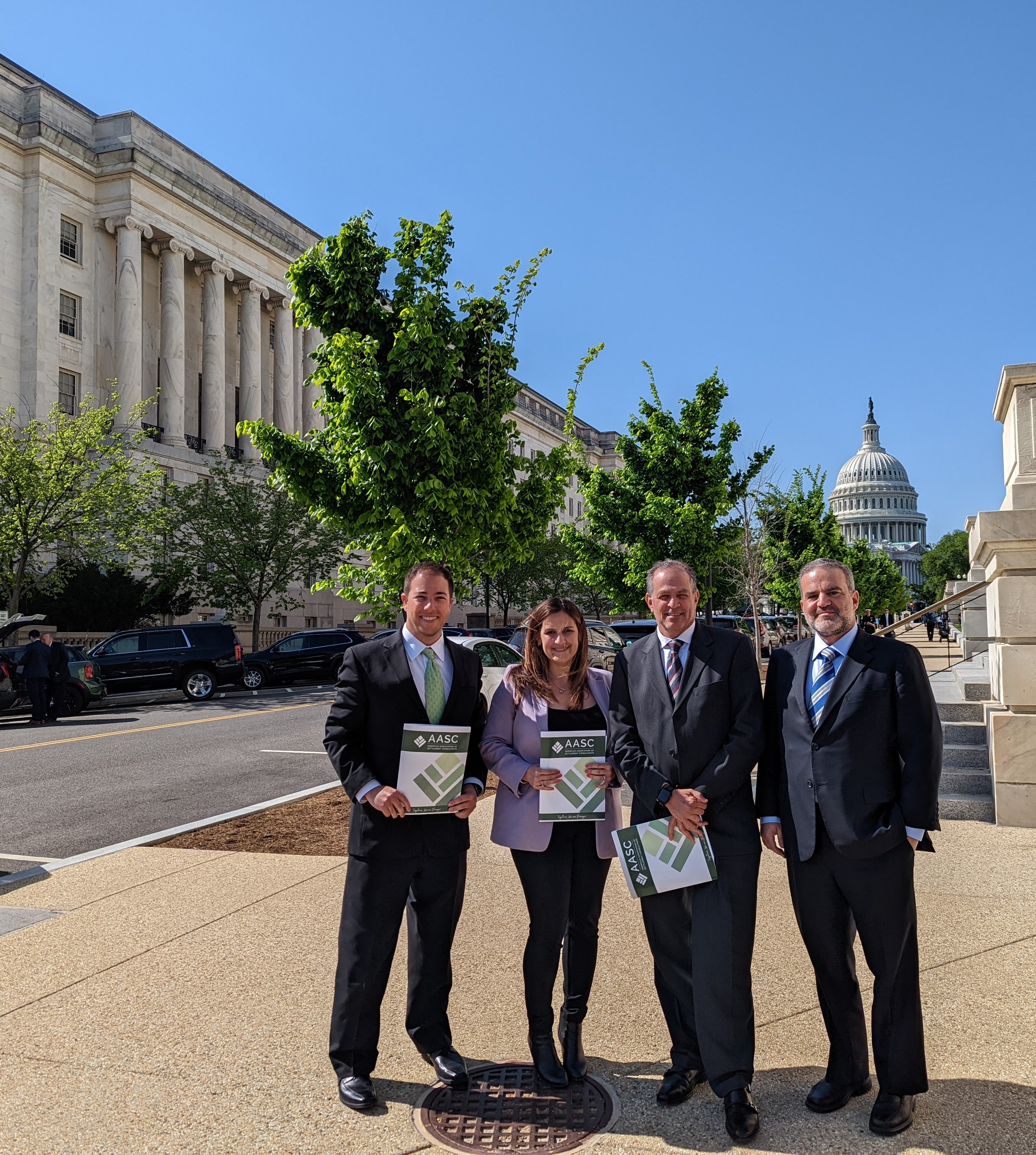
First, the AASC has successfully procured support from Members of Congress to request a government-funded study analyzing the rate of premature dissipation of settlement funds for victims who take their settlements in one lump sum. Congressmen Lloyd Smucker and Gregory F. Murphy, M.D. submitted the request on November 3, 2022, you may read the full text at this link. While it will take the Government Accountability Office time to conduct the study, having an authoritative government statistic on premature dissipation will raise the profile of the industry. By demonstrating the true dangers of a lump sum, the industry has a more compelling case both for victims and trial attorneys who do not present their clients with structured settlement annuities as an option.
Second, AASC is actively working to grow the types of cases that are eligible for structured settlements. AASC is focused on growing the industry as a rising tide of cases eligible for structures lifts all boats. For the last nine months, AASC has met with dozens of Members of Congress and their staff to discuss expanding I.R.C. 104(a)2 so that all sexual abuse cases are considered physical and therefore r
AASC has purposefully worked to build industry consensus on issues critical to our industry. The leadership at AASC recognizes that the industry at large agrees on many issues. We have spent our beginning years focused on those issues and made a concerted effort to involve other industry associations in our activities. AASC staff and leadership regularly communicate with the National Structured Settlements Trade Association (NSSTA) and the Society of Settlement Planners (SSP). In August, we issued a Press Release highlighting the industry unity behind our efforts to expand 104(a)2, as demonstrated by the Bloomberg article co-authored by Jeremy Babener and Presidents of the AASC, NSSTA, and SSP.
AASC has been working behind the scenes with our attorney allies to publish media that paints our industry in a favorable light and can be used in our advocacy on Capitol Hill. Robert Wood has published several pieces in Forbes and Tax Notes highlighting the need to expand 104(a)2. Additionally, Jeremy Babener has published articles in Bloomberg on both 104(a)2 and the need for statistics on dissipation risk. The industry’s reputation is important to the members of AASC and we are working hard to elevate the industry brand in the legal community and among the general public.
Lastly and importantly, AASC has created a community of education and camaraderie for settlement consultants. In addition to webinars, publications, and newsletters, AASC hosted two extraordinary conferences in 2022. We are also gearing up for our 2023 conference, April 17-19 at the Hilton in Scottsdale, AZ. Everyone who attended our conferences this year raved about how relevant and fresh the content was and how much fun they had socializing. You can check out pictures of our last conference at this link.
AASC will continue to tirelessly advocate for the entire industry. Members of AASC have committed, both financially and through sweat equity to the growth of the industry and to the success of AASC. In our first year, the AASCPAC raised over $100,000. We are looking forward to continued success in 2023 and encourage every member to do their part to grow and modernize the settlement planning industry.
To contact the author: Jenny Wieroniey, jwieroniey@americanasc.org






























